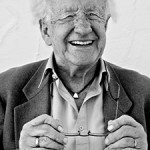The history of Peace: The Past and the Future?
By Johan Galtung
Review of The Glorious Art of Peace by John Gittings, NYC: Oxford University Press, 2012. Info about this book and a video with Gittings here.
Editor’s note
This is Galtung’s draft which has been submitted to International Affairs.
What a wonderful idea, the history of peace! Something most people want to learn about, the art of peace! Like the history of health, food and love, as opposed to the history of wars, illness and hunger, of generals, kings and empires. This is the history of something that can inspire people, statesmen-women among them, to do better. This is a more adequate textbook for schools than the usual list of kings (and queens, like “divorced-beheaded-died-divorced-beheaded-survived”).
Gittings’ historiography covers seven periods: “ancient peace” based on Greece and China; the “morality of peace” of the middle ages, from Jesus to the Crusades; the “humanist approach” of the early modern renaissance with a focus on Erasmus; then the “peace consciousness” of the enlightenment; the “alternatives to war” of the League of Nations, peaceful settlement of disputes, and nonviolence (Tolstoy, Gandhi); the “misappropriation of peace” from the UN to the Cold War; “giving peace a chance” from the Cold War to Iraq. The focus is on modernity with five of seven periods, and on the West, with laudable excursions into China and India-Russia for their impact on the West. Missing: the small non-West peace, like American Indian (Sioux confederation), Polynesian (ho’o pono pono), Zulu (ubuntu). Missing: the big non-West mega-peace between the biggest countries in the world, China and India. But Gittings covers a rich lot “from the Iliad to Iraq”.
Gittings’ methodology is empirical with events, countries and persons, and fascinating quotes and art photos; relating them causally and by similarities; always interestingly. Missing: theoretical explorations based on, say, conditioning by nature (geography, nutrition); by culture, like dualism for Greeks, yin/yang for Chinese; by structure, like caste/class verticality vs equity. But Gittings offers a lot of raw material for the theoretically minded.
The major impression from the book is the history of anti-war carried by persons and sometimes by groups; in other words, negative peace against violence. Of positive peace, like building equity and harmony, dissolving traumas and conflicts, there is close to nothing.
But Gittings is not to be faulted for this; rather, the civilizations he explored are. And this is, of course, the reason that we have peace studies as something different from war and anti-war studies. Besides, other fields on inquiry are not much better. Health studies focus on pathologies and their therapy much more than on positive health; and only recently did psychology start shifting the point of gravity from mental disorders toward positive psychology. Maybe the glorious art of peace is more in the history of the future?
Gittings’ kind reference to me as a “pioneer” in the field may serve as an invitation to add some words to his vision of the future.
His analysis of the decline of patriotism and the willingness to die for the causes of states is superb. The states, complete with ultima ratio regis, flags, monuments, anthems, national days, constitutions, armies and enemies, are now declining in salience, maybe except for the largest, like China-India-Russia-USA. Colonial wars declined with colonialism, inter-state wars now decline with the states; an occasion for the naive to celebrate the triumph of peace.
There is much to learn from the history of health at this point. The “glorious” decline of contagious diseases, with micro-organisms as killers, was not the end of disease. The structural diseases of the body (such as tumors with one tissue growing at the expense of others, and cardio-vascular diseases blocking the access of oxygen) and of the mind (like depressions, not knowing in and out), became the new concerns of the art of health. In the same vein, states used bullets and bombs–and fire and fission–as killers, and we are now witnessing an epidemic shift toward structural violence among and within states.
Look at the top elites in the Indo-European social formation. The aristocrats-kshatriyahs killed with bullets on battlefields. The merchants-vaisyahs with exploitation–one class or region growing at the expense of others–killing many more with money, on the market battlefield. And the clergy/intellectuals-brahmins with cultural repression and alienation on battlefields called debates, limiting the circulation of information–the oxygen of societies–to the culture of the dominant. The focus is on competition and struggle, on winners and losers, not on equal exchange, dialogues, synergies, transcendence. The killers today are less military than commercial, political and cultural elites with nothing “soft” in their power. Many more are killed these ways, physically and-or spiritually, than by the direct violence of the military. But the art of peace may be similar, based on equity in cooperation, on empathy for harmony, on reconciliation of the traumas of the past, and resolution of conflicts.
Which is not to say that direct violence cannot reappear with sub- and super-state actors, with nations refusing to be overshadowed by some dominant nation, and by nations and regions acquiring regional days, flags, anthems, etc. The Mother of Regions, the EU, has all of that; others may be copying and, like the EU, combining internal peace with external wars. Maybe a United Regions, without vetoes of course, and with a parliament elected by fair and free elections and referenda could do better than the League of Nations and the United Nations?
We need all the insights collected in Gittings’ impressive book and more, enriching our culture with more capacity to cooperate, empathize, reconcile and resolve conflict. Violence and war are often symptoms of underlying, unresolved traumas and conflicts. Identify them, solve them! Incompatibilities are challenges to make changes that accommodate compatibility. An art, yes; and it can be learned. Glorious, for sure. Moreover it is feasible, when we add Gittings’ optimism.
Article originally published here.
